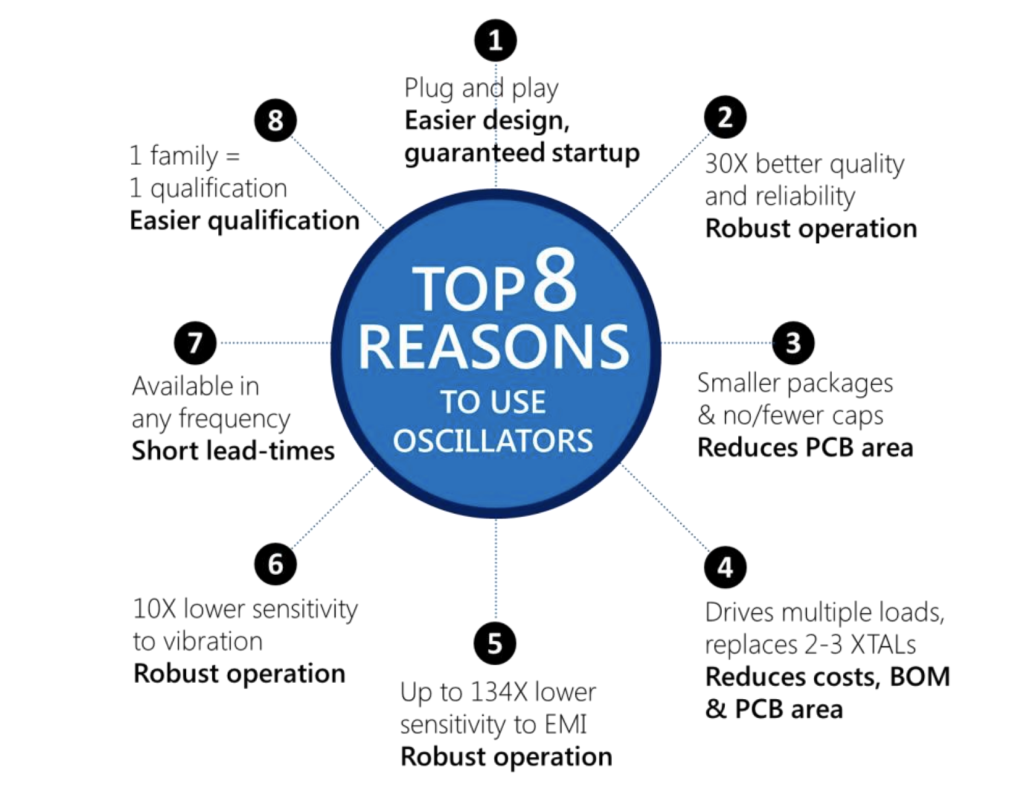The Ultimate Guide To Understanding Electronics XTAL Meaning: Unlock The Secrets!
Electronics XTAL Meaning: Understanding the Role and Importance of Crystal Oscillators in Electronic Devices
Greetings, Readers! In today’s article, we will delve into the world of electronics and explore the meaning and significance of crystal oscillators, commonly referred to as XTAL in the industry. These tiny but essential components play a crucial role in the operation of various electronic devices, including smartphones, computers, and televisions. By understanding the fundamentals of XTAL, you will gain valuable insights into the inner workings of your favorite gadgets. So, let’s dive in and explore the fascinating world of electronics XTAL meaning.
Introduction: Unveiling the Basics of Electronics XTAL Meaning
Before we delve into the intricate details, let’s start with a brief overview of what XTAL means in the context of electronics. XTAL is an abbreviation for crystal oscillator, which is an electronic device that uses the mechanical resonance of a vibrating crystal to generate a precise frequency. These crystals are typically made from quartz, which exhibits piezoelectric properties, making it ideal for use in oscillators. XTALs are widely used in electronic devices to provide accurate timing signals that synchronize the various components and ensure their proper functioning.
1 Picture Gallery: The Ultimate Guide To Understanding Electronics XTAL Meaning: Unlock The Secrets!

The electronics XTAL meaning goes beyond its fundamental role in timekeeping. These oscillators also serve as frequency references for communication systems, enabling stable and reliable transmission of data. Additionally, XTALs are utilized in digital-to-analog converters, microprocessors, and numerous other applications where precise timing is crucial.
Now that we have a basic understanding of XTAL, it’s time to explore its various aspects in more detail. In the following sections, we will cover the what, who, when, where, why, and how of electronics XTAL meaning, shedding light on its significance and impact in the world of electronics.
What is Electronics XTAL? Exploring its Function and Mechanism
At its core, an electronics XTAL is a crystal oscillator that generates a stable and accurate frequency. It consists of a quartz crystal, electrodes, and additional electronic components to form a complete oscillator circuit. When a voltage is applied across the electrodes, the quartz crystal undergoes mechanical deformation, resulting in a precise vibration. This mechanical vibration, in turn, generates an electrical signal with a specific frequency, which can be utilized for various purposes in electronic devices.

Image Source: sitime.com
One of the key functions of an XTAL is to provide a stable time base or clock signal to synchronize the operations of different components within electronic devices. This time base ensures that data is processed and transmitted at the intended speed, avoiding timing errors and ensuring the overall functionality of the device.
🔍 Did you know? The frequency stability of quartz crystals used in XTALs can be as high as 1 part per million (ppm), making them remarkably accurate timekeeping devices.
Who Uses Electronics XTAL? Applications and Industries
The applications of electronics XTAL extend across various industries, ranging from consumer electronics to telecommunications and aerospace. Here are some of the key sectors that heavily rely on XTALs:
1. Consumer Electronics: XTALs are found in smartphones, tablets, laptops, digital cameras, and other electronic devices that require precise timing for efficient performance.
2. Telecommunications: XTALs play a crucial role in communication systems, ensuring accurate frequency generation and synchronization for seamless data transmission.
3. Aerospace: The extreme conditions of space and aviation demand highly reliable and accurate timing devices, making XTALs an integral part of navigation systems, satellites, and aircraft.
🔍 Did you know? The aerospace industry often uses temperature-compensated XTALs to maintain frequency stability in harsh environments.
When and Where to Use Electronics XTAL? Considerations and Specifications
When selecting an XTAL for a particular application, several factors need to be considered:
1. Frequency: XTALs are available in various frequencies, ranging from kilohertz to megahertz. The desired frequency depends on the specific application’s requirements.
2. Tolerance: XTALs have a specified frequency tolerance, indicating the maximum deviation from the desired frequency. Higher tolerance values may be acceptable in some applications, while others demand extremely precise frequency control.
3. Operating Temperature: XTALs are sensitive to temperature changes, which can affect their frequency stability. It is crucial to select an XTAL that operates within the desired temperature range to ensure optimal performance.
4. Package Size: Depending on the space constraints, different package sizes and forms of XTALs are available, including surface-mount and through-hole options.
🔍 Did you know? XTALs are often color-coded to indicate their frequency range and other specifications, making it easier for manufacturers and engineers to select the appropriate component.
Why is Electronics XTAL Important? Advantages and Significance
The significance of electronics XTAL lies in its ability to provide accurate timing signals, ensuring the efficient operation of electronic devices. Here are some key advantages of using XTALs:
1. Precision: XTALs offer exceptional frequency stability and accuracy, making them indispensable in applications where precise timing is crucial.
2. Reliability: The robustness of XTALs, coupled with their long lifespan, ensures reliable performance even in demanding conditions.
3. Low Power Consumption: XTALs operate at low power levels, making them energy-efficient and suitable for battery-powered devices.
4. Cost-Effective: Considering their long lifespan and mass production, XTALs are cost-effective solutions for providing accurate timing in electronic devices.
Despite their many advantages, XTALs also have a few limitations. Let’s explore the disadvantages or potential drawbacks of using XTALs in electronic devices.
Disadvantages of Electronics XTAL: Understanding the Potential Drawbacks
1. Frequency Drift: XTALs are affected by temperature changes, which can cause frequency drift over time. Temperature-compensated XTALs are often used to mitigate this issue.
2. Size Limitations: The physical size of XTALs can pose challenges in miniaturized electronic devices, where space is limited.
3. Cost: While XTALs are generally cost-effective, high-precision XTALs with specialized features can be more expensive.
⚠️ Disclaimer: Despite these limitations, XTALs remain an essential component in modern electronic devices, providing reliable and accurate timing signals for optimal performance.
FAQs (Frequently Asked Questions) About Electronics XTAL
Q1: Can XTALs be used for frequency synthesis?
A1: Yes, XTALs can be used as frequency references for frequency synthesis, allowing the generation of precise frequencies by manipulating the XTAL signal.
Q2: Are XTALs interchangeable between different electronic devices?
A2: Not necessarily. XTALs need to be selected based on the specific frequency, tolerance, and other requirements of the device in which they will be used.
Q3: How long do XTALs typically last?
A3: XTALs are known for their longevity, with an average lifespan of 10 to 20 years, depending on the operating conditions and usage.
Q4: Can XTALs be damaged by electrostatic discharge (ESD)?
A4: Yes, XTALs are sensitive to ESD and should be handled with proper precautions to prevent damage.
Q5: What advancements can we expect in the field of XTAL technology?
A5: Ongoing research in XTAL technology focuses on improving frequency stability, reducing size, and optimizing power consumption to meet the evolving demands of modern electronics.
In Conclusion: Embracing the Power of Electronics XTAL
To conclude, electronics XTAL, or crystal oscillators, are vital components that provide timing signals for the seamless operation of electronic devices. From smartphones to aviation systems, XTALs play a crucial role in ensuring accurate frequency generation, synchronization, and timekeeping. By understanding the meaning and significance of XTAL, you gain a deeper appreciation for the intricate engineering behind your favorite gadgets.
So, the next time you use your smartphone, watch television, or navigate through the skies, remember the unsung hero within – the electronics XTAL, silently ticking away to keep your devices in perfect harmony.
Final Remarks: Exploring the World of Electronics
In this article, we have unraveled the mysteries surrounding electronics XTAL meaning. From its basic function and mechanism to its applications, advantages, and limitations, we have delved into the intricate world of crystal oscillators. The reliable and precise timing signals provided by XTALs are the backbone of modern electronics, ensuring seamless communication, accurate data processing, and efficient device performance.
As technology continues to advance, the field of XTALs will undoubtedly evolve, offering even more precise and efficient solutions. So, stay curious, keep exploring, and embrace the power of electronics XTAL in shaping our digital world.
This post topic: Electronics



